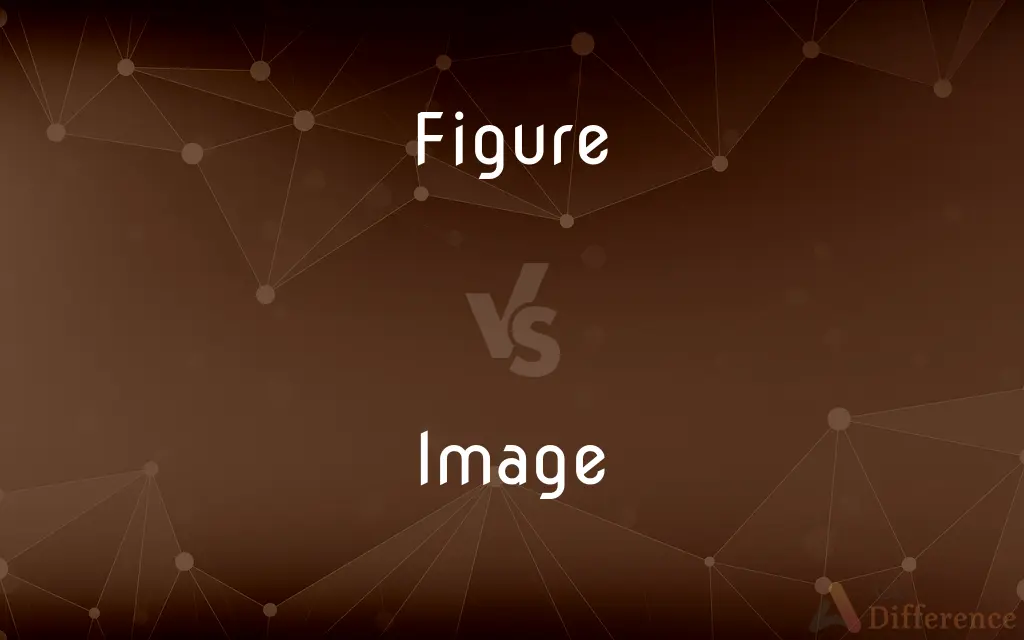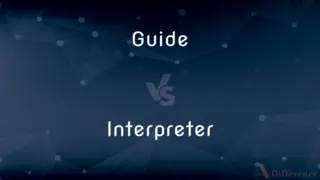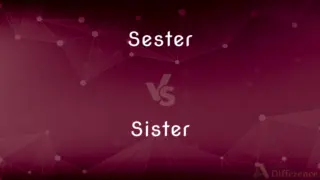Figure vs. Image — What's the Difference?
By Tayyaba Rehman & Maham Liaqat — Updated on February 27, 2024
Figure refers to a numerical representation or a diagrammatic illustration in a text, while an image is a visual representation of something, such as a photograph or drawing, captured or created to display a likeness or idea.

Difference Between Figure and Image
Table of Contents
ADVERTISEMENT
Key Differences
Figures often come in the form of graphs, charts, diagrams, or tables, serving to present data or concepts in a clear, visual format. Images, on the other hand, encompass a wide range of visual representations, including photographs, drawings, paintings, and digital creations.
Figures are primarily used in academic, scientific, or technical contexts to support or clarify the textual content. Images aim to reproduce or invent appearances, ideas, or scenes, often used in various fields for aesthetic, illustrative, or practical purposes.
Figures are typically associated with quantitative information or structured representations to aid understanding, images are more diverse, focusing on aesthetic, narrative, or symbolic content. The choice between using a figure or an image depends on the purpose whether to explain data or to visually engage.
The interpretation of figures usually requires specific knowledge or context, as they are designed to convey precise information. In contrast, images can be more universally understood, appealing directly to the viewer's senses and emotions without the need for specialized background knowledge.
Both figures and images play crucial roles in communication, but their effectiveness is dictated by the audience and the intended message. Figures cut through complexity with precision, while images evoke broader interpretations and emotional responses.
ADVERTISEMENT
Comparison Chart
Definition
A numerical or diagrammatic representation in texts.
A visual representation of something.
Purpose
To present data or concepts visually.
To reproduce or invent appearances or ideas.
Usage Context
Academic, scientific, technical.
Aesthetic, illustrative, practical.
Interpretation
Requires specific knowledge or context.
Universally understood, appeals to senses.
Types
Graphs, charts, diagrams, tables.
Photographs, drawings, paintings, digital creations.
Compare with Definitions
Figure
A schematic drawing in a manual.
Refer to figure 7 for the assembly instructions.
Image
A photograph capturing a moment.
The image shows a family celebrating a birthday.
Figure
A mathematical or statistical representation.
The figure indicates a significant increase in variance.
Image
A painting depicting a historical event.
The gallery displayed an image of the coronation.
Figure
A diagram explaining a scientific process.
Figure 2 depicts the water cycle.
Image
A digital creation for a website.
The web designer optimized each image for faster loading.
Figure
A table of numerical data.
See the appendix for a detailed figure of the survey results.
Image
A symbolic representation in art.
The image of the dove represents peace.
Figure
A written or printed symbol representing something other than a letter, especially a number.
Image
A drawing in a children's book.
Each image was carefully illustrated to match the story.
Figure
Figures Mathematical calculations
Good at figures.
Image
An image (from Latin: imago) is an artifact that depicts visual perception, such as a photograph or other two-dimensional picture, that resembles a subject—usually a physical object—and thus provides a depiction of it. In the context of signal processing, an image is a distributed amplitude of color(s).
Figure
An amount represented in numbers
Sold for a large figure.
Image
A representation of the external form of a person or thing in art
Her work juxtaposed images from serious and popular art
Figure
Figures One of the digits specified as making up a larger number
A salary in the six figures.
Image
A simile or metaphor
He uses the image of a hole to describe emotional emptiness
Figure
The representation of any form, as by drawing, painting, modeling, carving, embroidering, etc.; especially, a representation of the human body; as, a figure in bronze; a figure cut in marble.
A coin that bears the figure of an angel.
Image
Make a representation of the external form of
Artworks which imaged women's bodies
Figure
A diagram or drawing, made to represent a magnitude or the relation of two or more magnitudes; a surface or space inclosed on all sides; - called superficial when inclosed by lines, and solid when inclosed by surfaces; any arrangement made up of points, lines, angles, surfaces, etc.
Image
A representation of the form of a person or object, such as a painting or photograph.
Figure
Value, as expressed in numbers; price; as, the goods are estimated or sold at a low figure.
With nineteen thousand a year at the very lowest figure.
Figure
Make a mathematical calculation or computation
Figure
A graph showing trends over time.
The figure illustrates sales growth from 2015 to 2020.
Common Curiosities
What is the primary purpose of a figure?
To visually present data or concepts for easier understanding.
How do figures aid in scientific research?
They help in presenting complex data in a more comprehensible and accessible way.
Are photographs considered images or figures?
Photographs are typically considered images unless used specifically to illustrate data or information, in which case they can be figures.
What role do images play in media?
Images capture attention, convey messages, and evoke emotional responses in viewers.
Can the same visual be both a figure and an image?
Yes, depending on its use; for clarity or data illustration, it's a figure, for visual appeal or narrative, it's an image.
How do figures complement textual information?
By providing a visual summary or representation of text-based data or concepts.
Can images be used for educational purposes?
Yes, they can visually support learning and make abstract concepts more tangible.
Why are images important in advertising?
They create a memorable visual impact and communicate brand messages quickly.
What makes a figure effective in academic writing?
Clarity, accuracy, and the ability to convey complex information simply.
How does the interpretation of images differ from figures?
Images are interpreted more subjectively, while figures require understanding of the context or data they represent.
What distinguishes a digital image from a traditional painting?
Digital images are created and manipulated electronically, while traditional paintings are handcrafted with physical materials.
Can an image serve as a figure?
Yes, if it's used to illustrate data or support textual content in a specific context.
Is there a difference in how figures and images are cited in academic papers?
Yes, figures are typically cited with a reference to their source in the text, while images might require permission and attribution to the original creator.
How do figures enhance understanding in technical manuals?
They provide visual instructions that complement written explanations, making complex procedures easier to follow.
Why are images crucial in social media marketing?
They engage users more effectively than text alone, increasing interaction and message retention.
Share Your Discovery

Previous Comparison
Guide vs. Interpreter
Next Comparison
Sester vs. SisterAuthor Spotlight
Written by
Tayyaba RehmanTayyaba Rehman is a distinguished writer, currently serving as a primary contributor to askdifference.com. As a researcher in semantics and etymology, Tayyaba's passion for the complexity of languages and their distinctions has found a perfect home on the platform. Tayyaba delves into the intricacies of language, distinguishing between commonly confused words and phrases, thereby providing clarity for readers worldwide.
Co-written by
Maham Liaqat













































